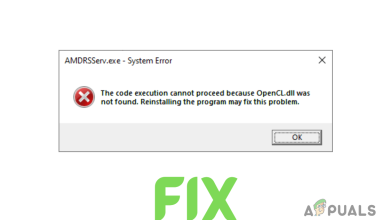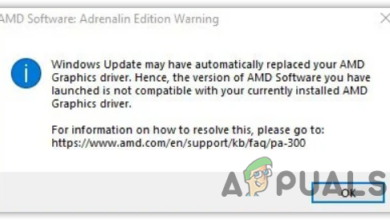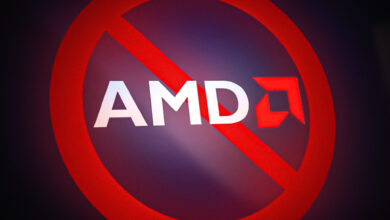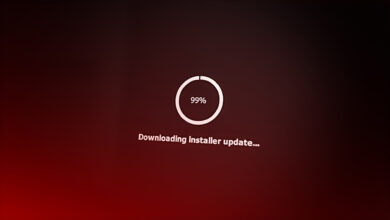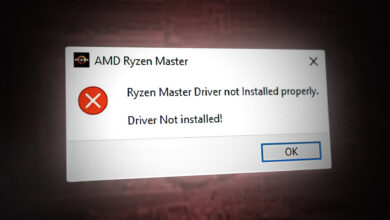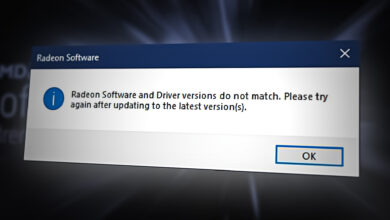How to Fix AMD Radeon Software Won’t Open?
Using an integrated GPU instead of a discrete, incompatible version of the Graphics driver in the registry editor, a faulty Windows update, and a corrupted Radeon profile are some of the most common factors behind this issue. This issue can be caused after installing the latest Windows update or a Graphics driver, and occasionally, it occurs randomly, which is very rare.
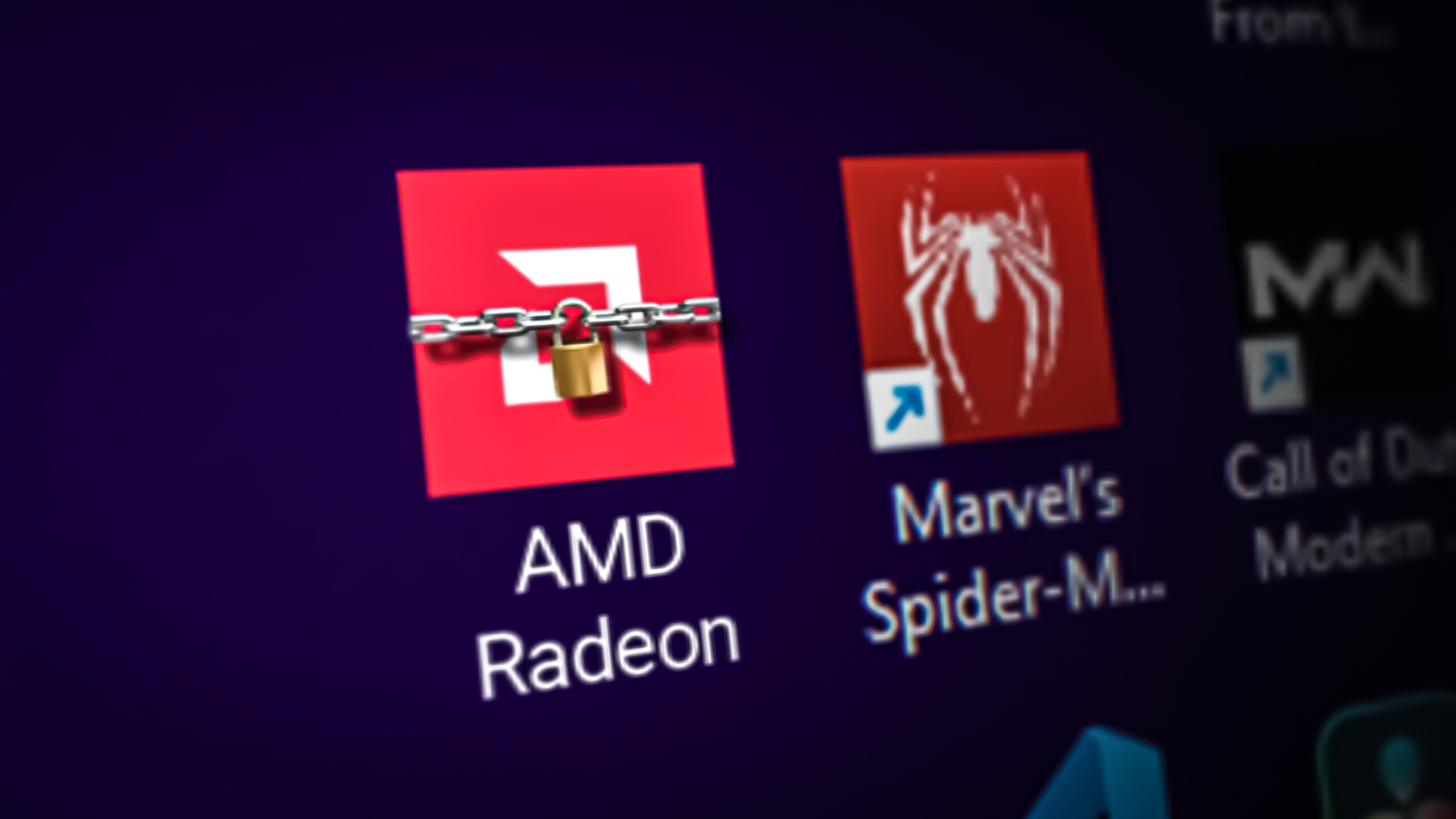
It is obvious that if the Radeon software cannot detect the right Graphics driver, it won’t open. Besides, some third-party services may prevent Radeon software from launching. To fix this issue, apply the following methods.
1. Delete the AMD Radeon profile
The gmdb.blb is a text file containing the AMD Radeon software profile with all the applied configurations. It is possible that the profile may get corrupted, which is why the AMD Radeon Software is not opening on your computer. To ensure that, follow the steps to delete the CN folder. Once you delete it, it will automatically generate when you launch the AMD Radeon software.
- Press the Win + R keys simultaneously to open the Run Window.
- Type AppData in the input box to navigate into the AppData folder.
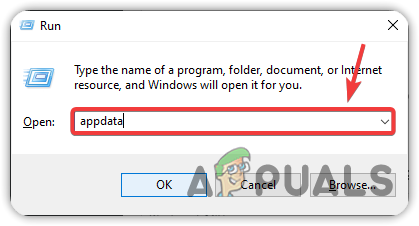
Navigating to the Appdata folder - Then, go to Local > AMD.
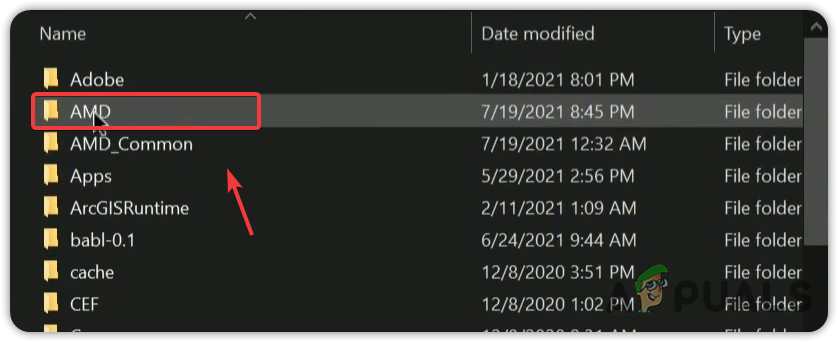
Navigating to the AMD folder - Then, right-click the CN folder and click Delete.
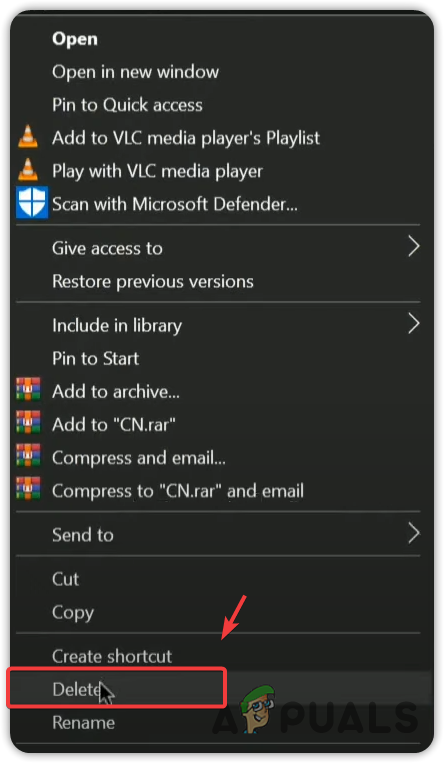
Deleting AMD Radeon Profile - Once done, now try to launch AMD Radeon software. If the issue is not fixed, follow the other methods.
2. Disable Integrated GPU
Integrated GPU is a built-in GPU into the processor. If your processor has a built-in GPU, then make sure it is disabled from the device manager, as it can cause AMD Radeon software not to launch due to incompatibility of the current driver with the AMD Radeon software.
Since the AMD Radeon software can only launch and work with the AMD Graphics driver, the software does not launch with the iGPU. Therefore, checking which display driver is currently in use is worth it. Here are the instructions:
- Right-click the Start Menu and select Device Manager from the options.
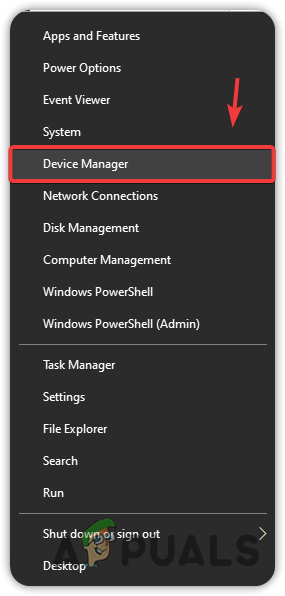
Navigating to Device Manager - Once the device manager is launched, right-click the integrated graphics driver and click Disable device.
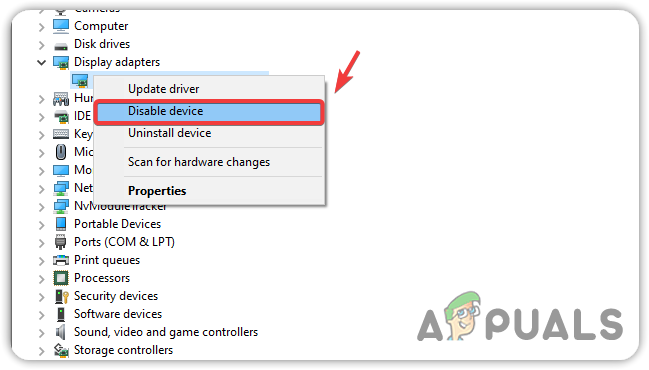
Disabling the Integrated Graphics driver - Once you have disabled the integrated graphics driver, check whether the AMD graphics driver is enabled or not. To do that, right-click on it and go to Properties, then check the device status, which should be The device is working properly. If there is an error code, instead of The device is working properly, there is a problem with the software or hardware.
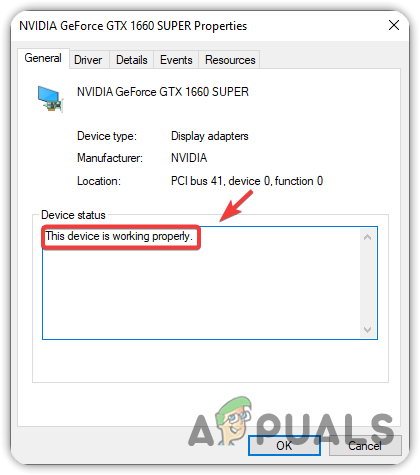
Checking Graphics driver status - Once done, now try to launch AMD Radeon software. If it’s still not working, don’t give up. Follow the next method.
3. Roll back to the older version of your Graphics driver
If you are encountering this issue after updating to the latest version of your graphics driver. In that case, it is possible that the updated driver is not compatible with your AMD Radeon software. In this case, either do a clean installation of your graphics driver or roll back to the older version of your Graphics driver. If roll backing to the older version does not fix your issue, reinstalling the driver and software might work.
- To roll back the Graphics driver, right-click the Start Menu and select Device Manager.
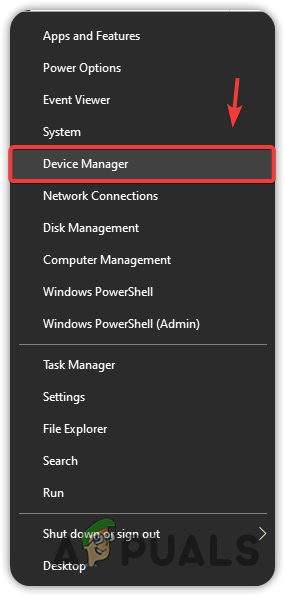
Opening Device Manager - Then, expand the Display Adapters.
- Right-click the graphics driver, and click Properties.
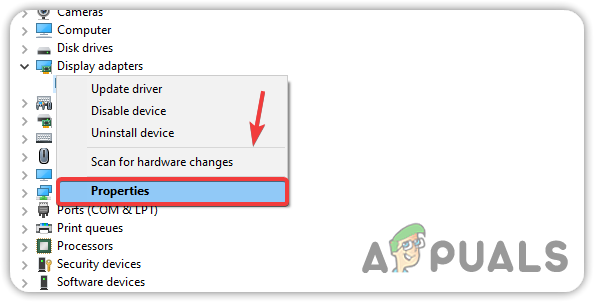
Navigating to graphics driver properties - Go to Driver from the top, and then click Roll Back Driver. If this option is unavailable, follow the second method.
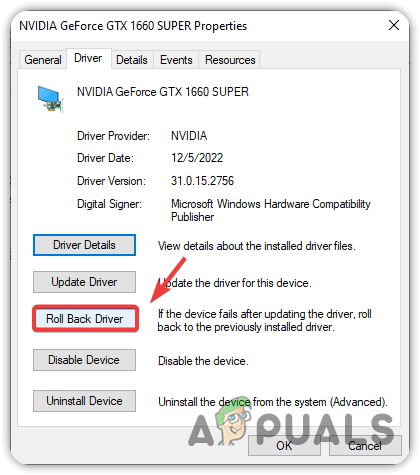
Roll backing the Graphics driver - Select the reason and then click Yes to roll back the previous driver.
4. Match the driver version to the registry editor
Since this issue can also occur due to an outdated version of the Graphics driver in the registry editor, but in reality, you have the updated graphics driver. In this case, changing the driver version from the registry editor might help fix this issue.
- To change the driver version, press the Windows + R keys together to open the Run Window.
- Type regedit in the input box and click OK to navigate into the registry editor.
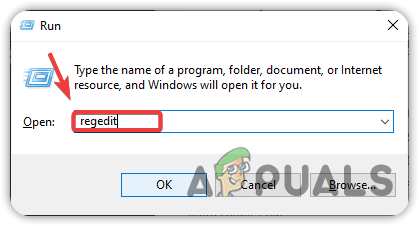
Opening Registry Editor - Click Yes if UAC prompts.
- Once you are in the registry editor, go to the following location by expanding the folders on the left pane.
Computer\HKEY_LOCAL_MACHINE\SOFTWARE\AMD\CN
- In the right pane, look for the entry named as DriverVersion. If you find it, double-click on it.
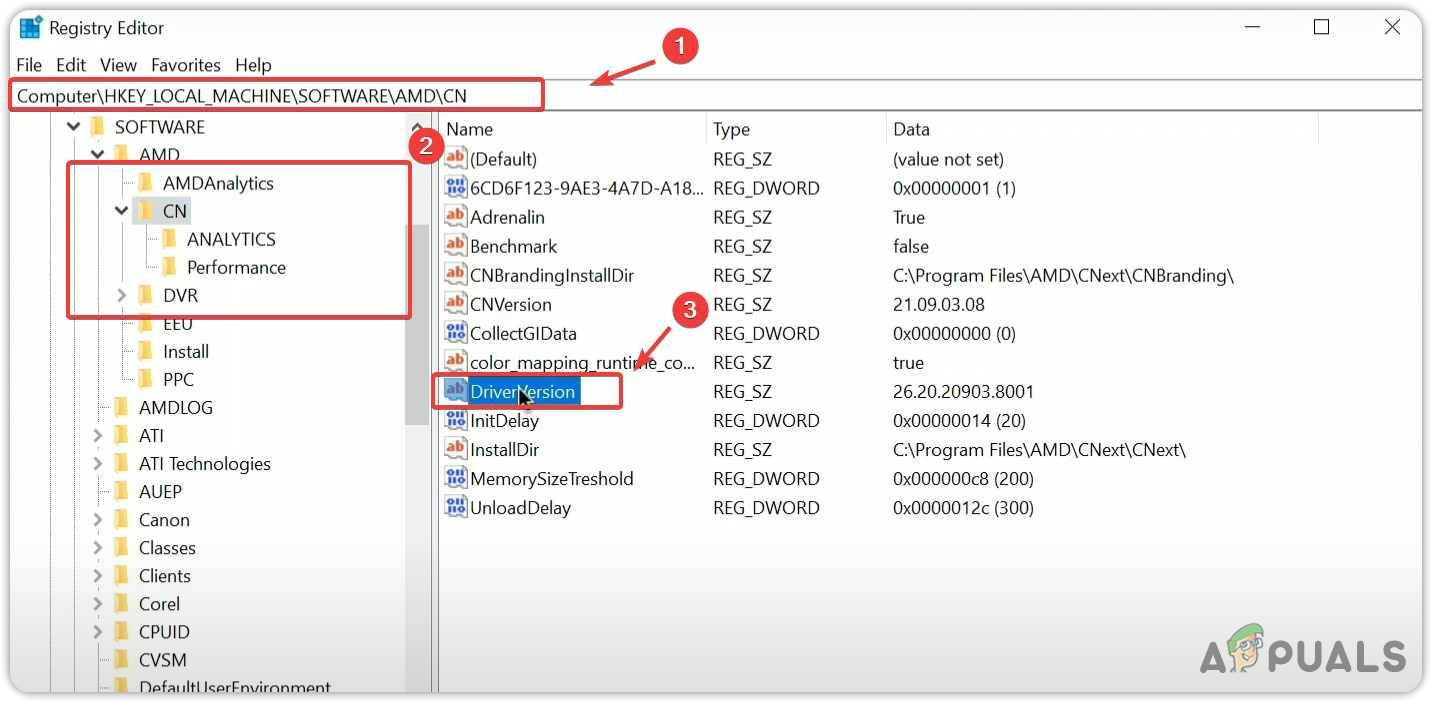
Opening AMD DriverVersion Registry entry - A short Window will appear. Minimize it and then click the Start Menu and type Device Manager.
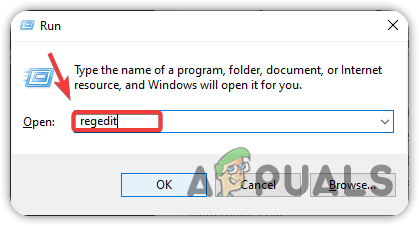
Launching Registry Editor using the Run command - Once the device manager is opened, expand the Display adapters menu and right-click the driver.
- Choose Properties and go to the Driver tab from the top.
- Copy the driver version.
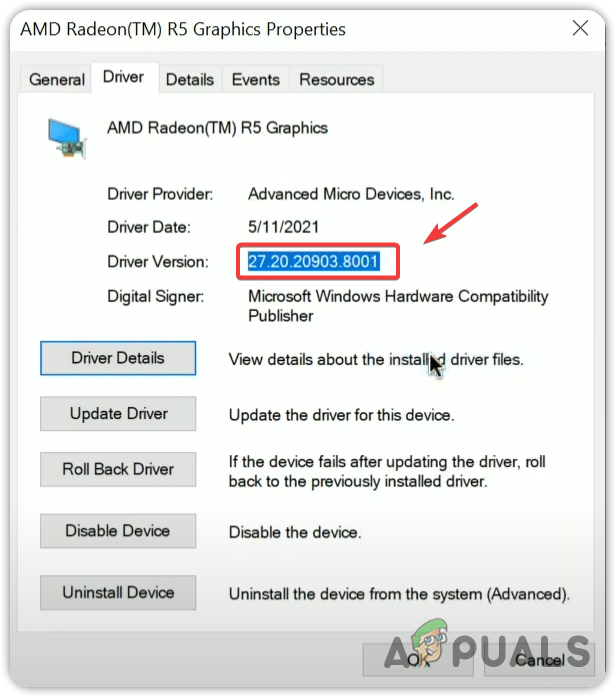
Copying AMD driver version - Maximize the registry Window, and paste the driver version here.
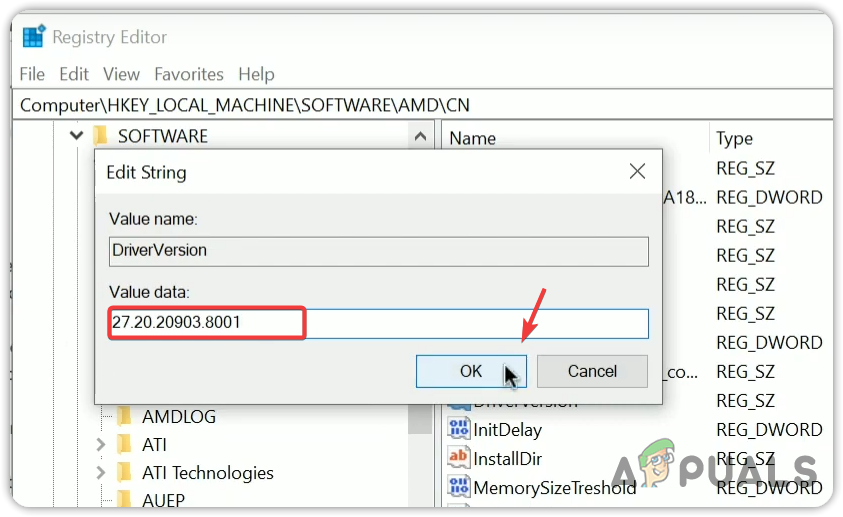
Pasting driver version - Once done, click OK, restart your computer, and check if the Radeon software is opening.
5. Clean Reinstall of GPU drivers
If the issue is still there, we recommend you go for a clean reinstallation of the Graphics driver. To do a clean reinstallation, we will use the Display Driver Uninstaller application. It is an application that users can use to uninstall drivers along with the registry files. To do so, follow the steps.
- First, download the Display Driver Uninstaller.
- Once the downloading is finished, open the folder where you saved the downloads.
- Right-click the DDU folder and select Extract to “[Guru3D.com]-DDU\”.
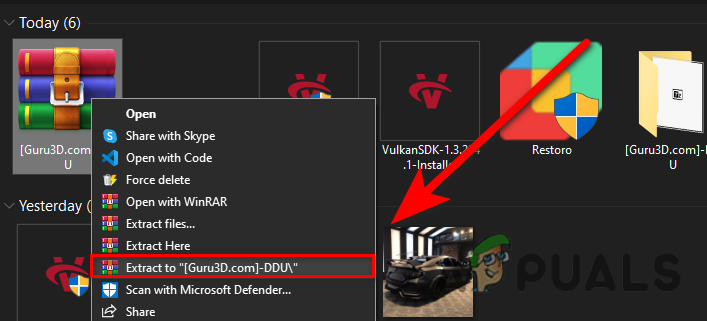
Extracting DDU Zip folder with WinRar - Once the extraction process is finished, navigate to the extracted folder and run the DDU v [Version Name].
- Click Extract.
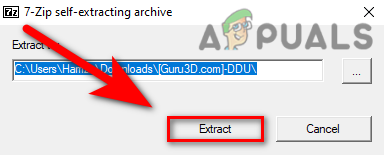
Extracting DDU Application - Once the extraction is finished, go to the folder and run the Display Driver Uninstaller.
Note: Display Driver Uninstaller recommends users uninstall drivers in safe mode for a complete uninstallation. Therefore, we also recommend you access the safe mode before uninstalling the graphics driver. - Select the GPU and its vendor from the right side.
- Once done, click Clean and Restart.
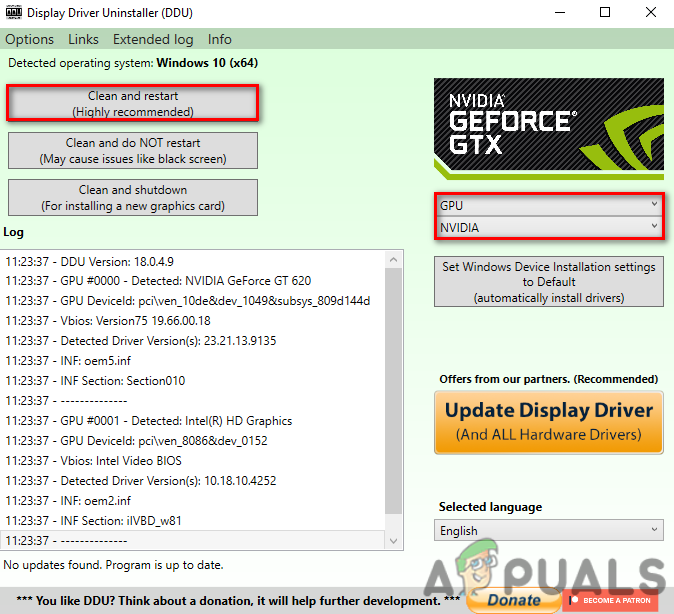
Selecting Graphics Card driver for the Uninstallation Process - After restarting the Windows, visit the official website of your Graphics card manufacturer.
- Search the driver with your Graphics card name.
- Then, select the operating system and then click Download to download the Graphics driver installer.
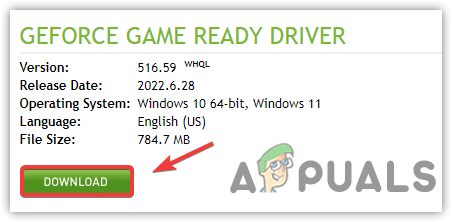
Downloading Graphics Driver - Once the downloading is finished, open the installer and follow the on-screen instructions to install the driver.
- Once done, restart your computer.
6. Use a System Restore utility
If the clean installation of the graphics card did not help fix this issue, then the last two solutions are either reset your Windows without losing the data or restore your Windows to a previous state.
Since none of the methods has worked, restoring Windows to a previous state can be a good option if you have a restore point created when everything is working fine. But if you don’t have it, you can try resetting or reinstalling Windows. To utilize the restore point, follow the steps:
- Press the Windows key and type rstrui.
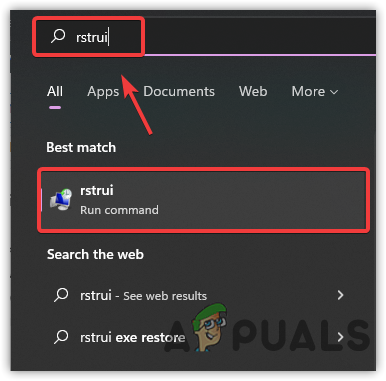
Navigating to a System Restore with a command - Open the system restore settings, and click Next.
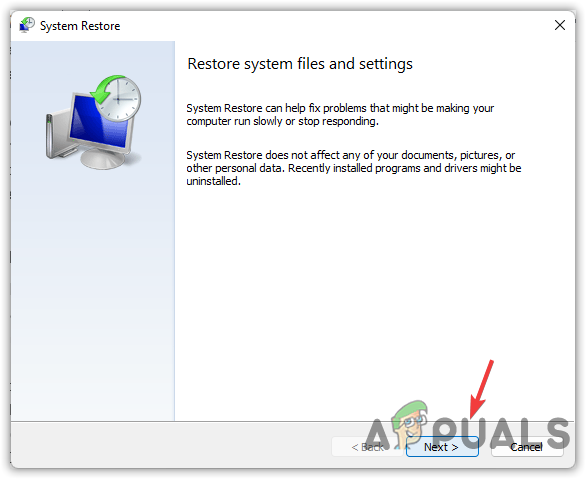
Clicking Next to proceed - Now select a restore point and click Next.
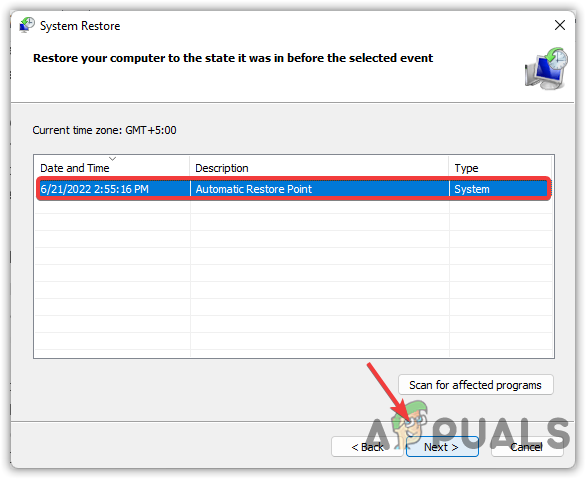
Selecting a Restore Point - Click Finish to restore your Windows to a previous state.
- Once your computer is restarted, check if the AMD Radeon Software is opening or not.
